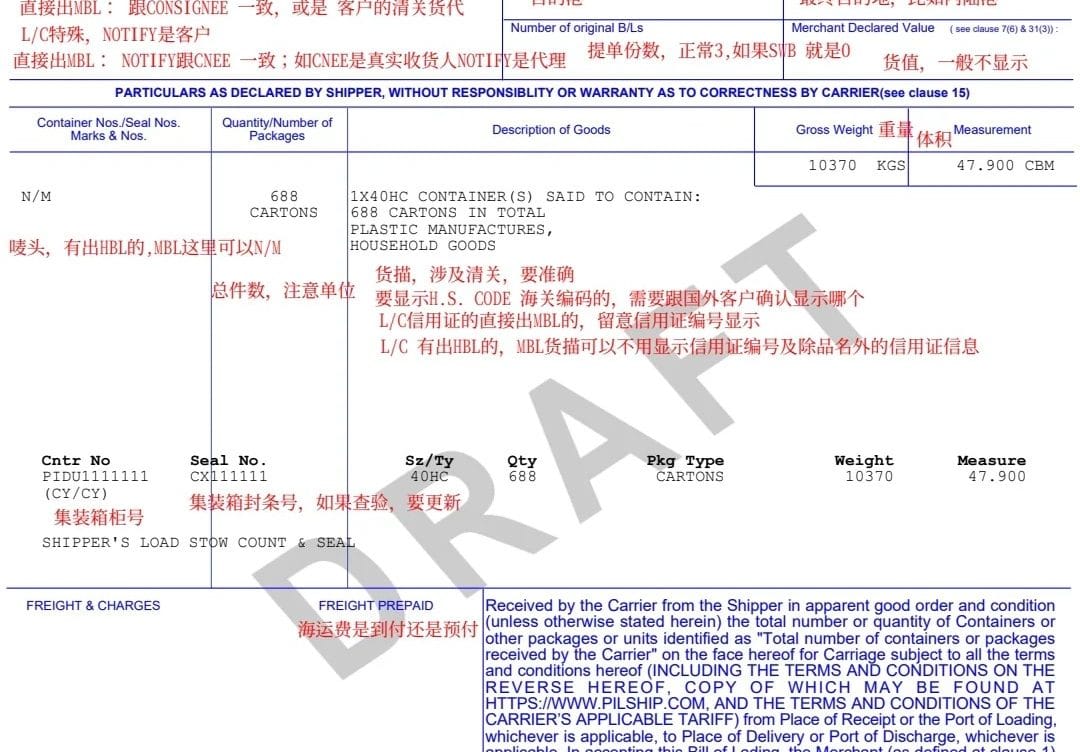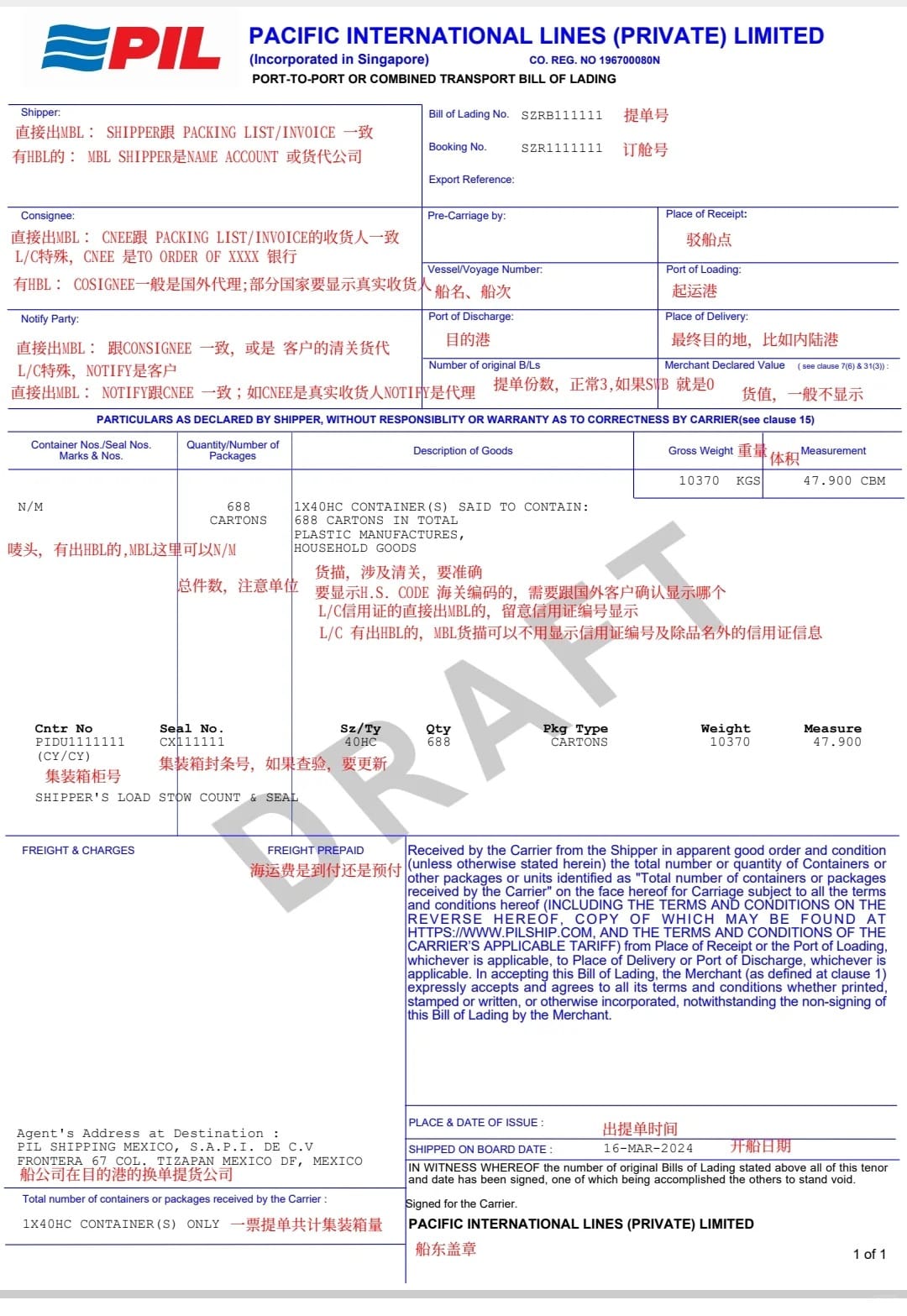
Understanding Bills of Lading
Knowledge of Bills of Lading: Understanding Bills of Lading (1)
Bill of Lading (B/L):
A document issued by a logistics entity as proof of cargo receipt, provided to the shipper or consignee.
(Shipowner/airline issues it to the freight forwarder; the freight forwarder issues it to the factory or consignee.)
- Classification by Issuer:
A. Sea Freight/Railway:- House Bill of Lading (HBL): Issued by the freight forwarder
- Master Bill of Lading (MBL): Issued by the shipowner or railway company
B. Air Freight: - House Airway Bill (HAWB): Issued by the freight forwarder
- Master Airway Bill (MAWB): Issued by the airline
- Classification by Form of Issuance:
- Original Bill of Lading
- Telex Release Bill of Lading
- Sea Waybill
- Classification by Transport Type:
- Railway Bill of Lading
- Airway Bill of Lading
- Sea Bill of Lading
- Classification by Number of Copies:
A. 3/3: 3 signed and stamped originals, 3 unstamped and unsigned copies
B. 3/2: 3 signed and stamped originals, 2 unstamped and unsigned copies
C. 3/1: 3 signed and stamped originals, 1 unstamped and unsigned copy- Option A is the most common. However, more shipowners are adopting B or C to cut costs. Freight forwarder bills often use A or B.
- Letters of Credit typically require 3/3.
- Classification by Consignee Designation:
- Nominative Bill of Lading: Specifies the consignee’s name; only the named consignee can take delivery, non-transferable.
- Order Bill of Lading: States “to order” or “to the order of [someone]”; transferable by endorsement.
- Bearer Bill of Lading: No consignee specified; anyone holding the document can claim the goods, transferable without endorsement.
- Classification by Transportation Method:
- Direct Bill of Lading: Goods are shipped directly from the port of loading to the port of destination without transshipment.
- Transshipment Bill of Lading: Goods are transferred to another port during the journey.
- Multimodal Transport Bill of Lading: Goods are transported via multiple modes (e.g., sea, land, air) to reach the destination.
- Classification by Issuance Timing:
- Advanced Bill of Lading: Issued before the goods are loaded, used to arrange transportation in advance.
- Backdated Bill of Lading: Issued after loading but with an earlier loading date.
- On-Date Bill of Lading: Issued at the time the goods are actually loaded.

